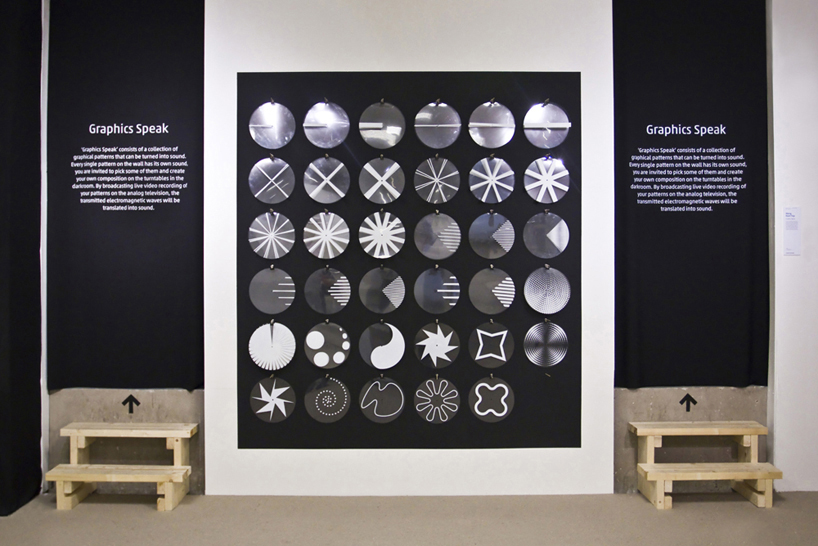By Mollie Cohen
As children we were often asked to do creative activities. These may have involved questions like, “If this color could make a sound, what sound
would it make?” A Malaysian designer, however, took this idea and amplified it.
'Graphics Speak' is an installation for the Toolkit Festival, an
Italian festival which encourages artists to go to workshops and to be inspired
by the artists that have been chosen to display their work in the A+A Slovenian
Exhibition Centre.
The
installation itself is exactly what it sounds like. The artist (Weng Nam Yap)
has designed several clear plastic discs that go over the records on record
players. The user may choose one of these discs outside of the installation and
then walk in.
The installation itself is inside of a darkroom and consists of
two record players and an analog television. By broadcasting live video
recordings of the discs onto the audio television the electromagnetic waves are
translated into sound through a sensor.
The last piece of musical instrument of
is custom made. Instead of being able to place discs on it and manipulate the
sound with those it produces a solid sound that comes from the lines that are
already on it. The sounds this device makes can be manipulated by turning the crank
to the right of the instrument and changing the line that the analog television
is reading.
Various
musical compositions can be made by mixing different patterns on the
turntables. Though unlikely to produce anything truly amazing in the realm of
musical genius, the art installation is one that stands on it's own as
something that nobody else has been able to do.
It is also family friendly. Due
to the art installation not requiring anything truly special it is easy for
children to interact with the exhibition making it a great hit among them.



